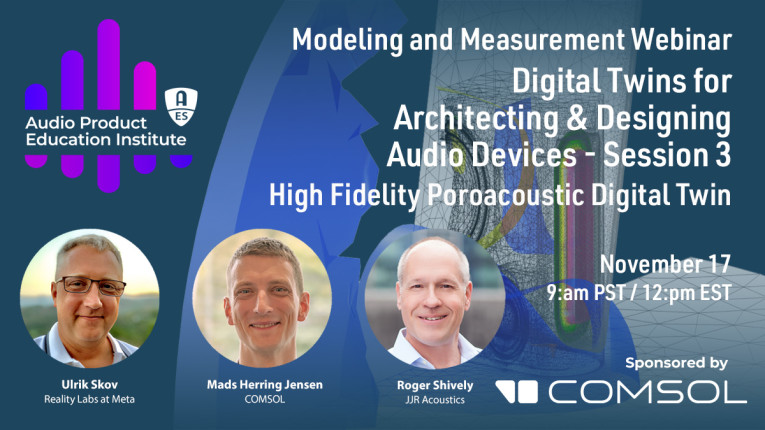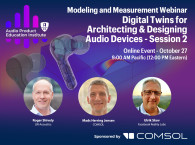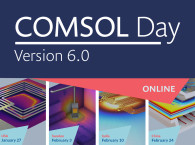
Following two very interesting sessions exploring the use of digital twins and presentations on how simulation can seat at the core of the whole product design and development journey, this new webinar will focus directly on describing an actual project and work structure. In this new session, Ulrik Skov (Reality Labs at Meta) shares a “war story” – an example of an actual device development – where a low and high frequency sub-system was architected, designed, optimized and troubleshooted over a period of a year struggling with an Industrial Design with a floating display in front of the audio system.
Using Digital Twins systematically through the design and optimization stages of an acoustic device, offers the opportunity to, within few days, upgrade the Digital Twin to design-out complex system level, undesired losses of performance, which normally only an experimental approach would have identified. In the example, a significant bouquet of discoveries and insight are presented detailing how a Digital Twin was used to facilitate the creation of the device’s low and high frequency sub-systems. The presentation is concluded by how an unfortunate unexpected dip between 4-6kHz was caused by the cosmetic shell wrapped with fabric. A problem which likely would have taken weeks to months to fix, or in the worst case would not have been corrected with an optimal physical design trade-off between the grills open area and the fabrics acoustic characteristics.
In this session we will learn how the Digital Twin at the end was upgraded to include the perforated shell covered with fabric using the COMSOL multiphysics poroacoustic capabilities. This allowed detecting how the combination of the transducer, front volume, shell holes and fabric caused the transmitted acoustic wave to enter an acoustic mode which resulted in an undesired deep dip at high frequencies. Once the physics were understood it was effortless to find and show a virtual solution, which was experimentally prototyped, verified and implemented. The presentation will explore how this upgraded high-fidelity Digital Twin identified the problem, and allowed the design team to get back on track within few days.
The webinar will feature a practical demonstration of poroacoustics, poroelastic waves and interior impedance using COMSOL, which represent 3 levels of added complexity/detail to potential model the same phenomena. Attendees will understand the capabilities for modeling porous materials with the functionality of the Acoustics Module in COMSOL and how different models and formulations could be applied. Finally, the session will showcase a method to use parameter estimation to model porous materials.
November 17, 2021, 9:00am Pacific (12:00pm Eastern)
Digital Twins for Architecting & Designing Audio Devices - Session 3
More information and Registration Available Here
www.audioproducteducationinstitute.org






